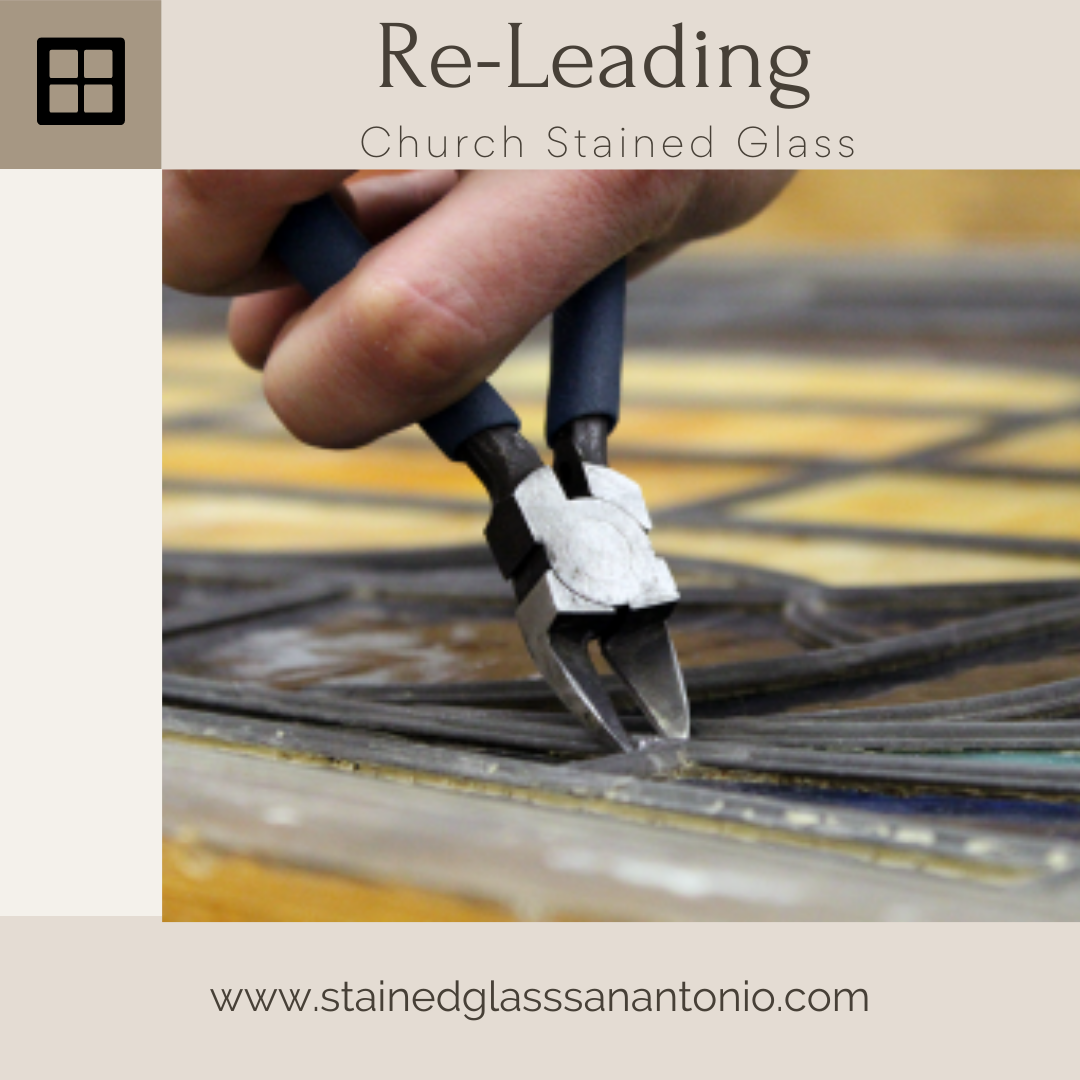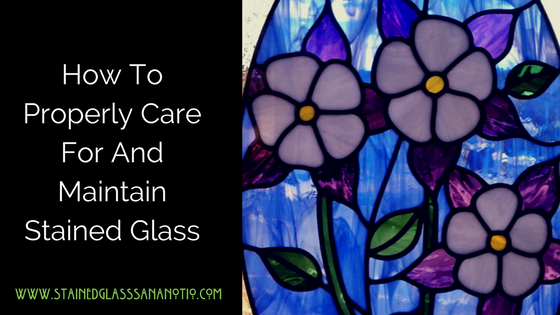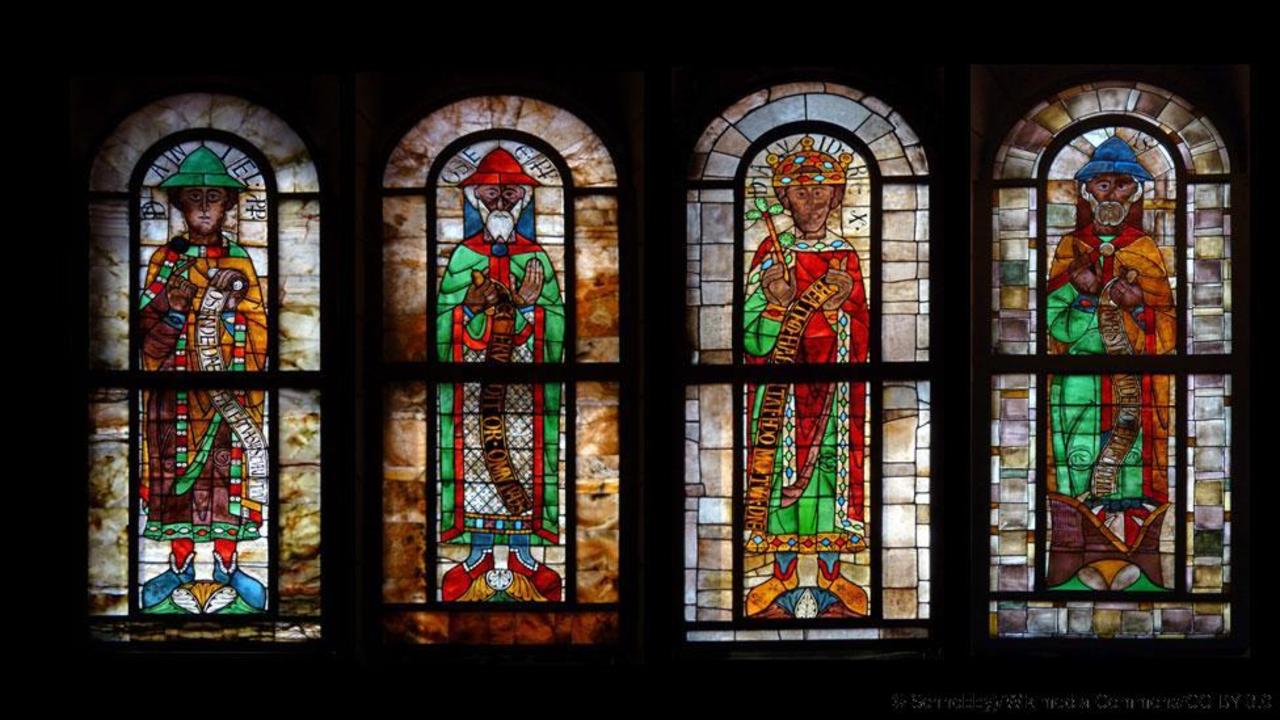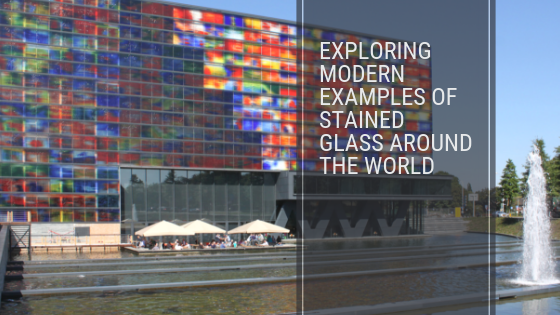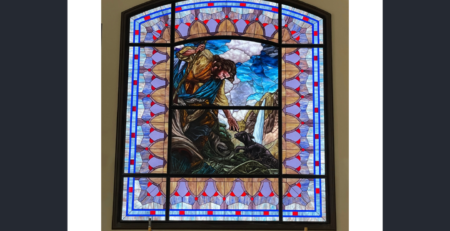Re-Leading Church Stained Glass in San Antonio
The glass in stained glass windows is quite resilient. It is actually thicker than ordinary window glass. Stained glass windows will last a long time because of this. However, the leading becomes weak over time as it reacts to air and moisture to oxidize and become brittle. Because lead joints hold the windows together, when the top starts to deteriorate after 60-100 years, it’s time to re-lead and restore your San Antonio church stained glass windows.
Re-Leading to Restore Stained Glass
The process of removing old lead and replacing it with fresh lead is known as caming. This is one of the procedures we follow in every restoration. It’s a time-consuming procedure that must be done meticulously, but the results are stunning!
The Stained Glass Re-Leading Process
STEP 1: Removing the Stained Glass
We almost always have to remove the entire window in order to replace brittle lead. Lead restoration is not the same as lead repair, which is a minor drop-in repair. After removing the window, we transport the complete structure to our San Antonio studio.
STEP 2: Scanning the Glass Into the Computer
Once we’ve collected all of the stained glass from our home, we take a photo of it together so that we can figure out where each piece goes. This image is imported into a computer system so that we may use it as a model or reference if necessary.
STEP 3: Disassembling the Stained Glass and Removing Old Lead
When we restore a damaged stained glass panel, we take it apart. This implies removing all of the old lead and each piece of glass. We carefully soak every individual piece of glass in a particular solution to eliminate decades of filth and grime after the lead has been removed and the glass is free.
STEP 4: Re-Leading the Stained Glass
We repeat the process, cleaning and re-setting the glass. We place the scanned image from step 2 on the glass then replace it. The new lead is then soldered together like seams to create a modern lead that differs from old stained glass windows’ lead. Lead for antique stained glass windows was previously obtained by melting down pieces of old panels.
STEP 5: Re-Installing the Re-Leaded Stained Glass
This is, without a doubt, the most enjoyable step! We return the stained glass window to the church and reinstall it after we’ve completed replacing the lead and shattered glass. Depending on the demands of the church, we may apply a Low-E glass cover at this stage. The window looks considerably different than it did previously at this point. It’s brighter, more intense, and simply wonderful. It also has a longer life expectancy: 200 years before needing attention.
Contact us today to learn more about restoration for your San Antonio church stained glass.

